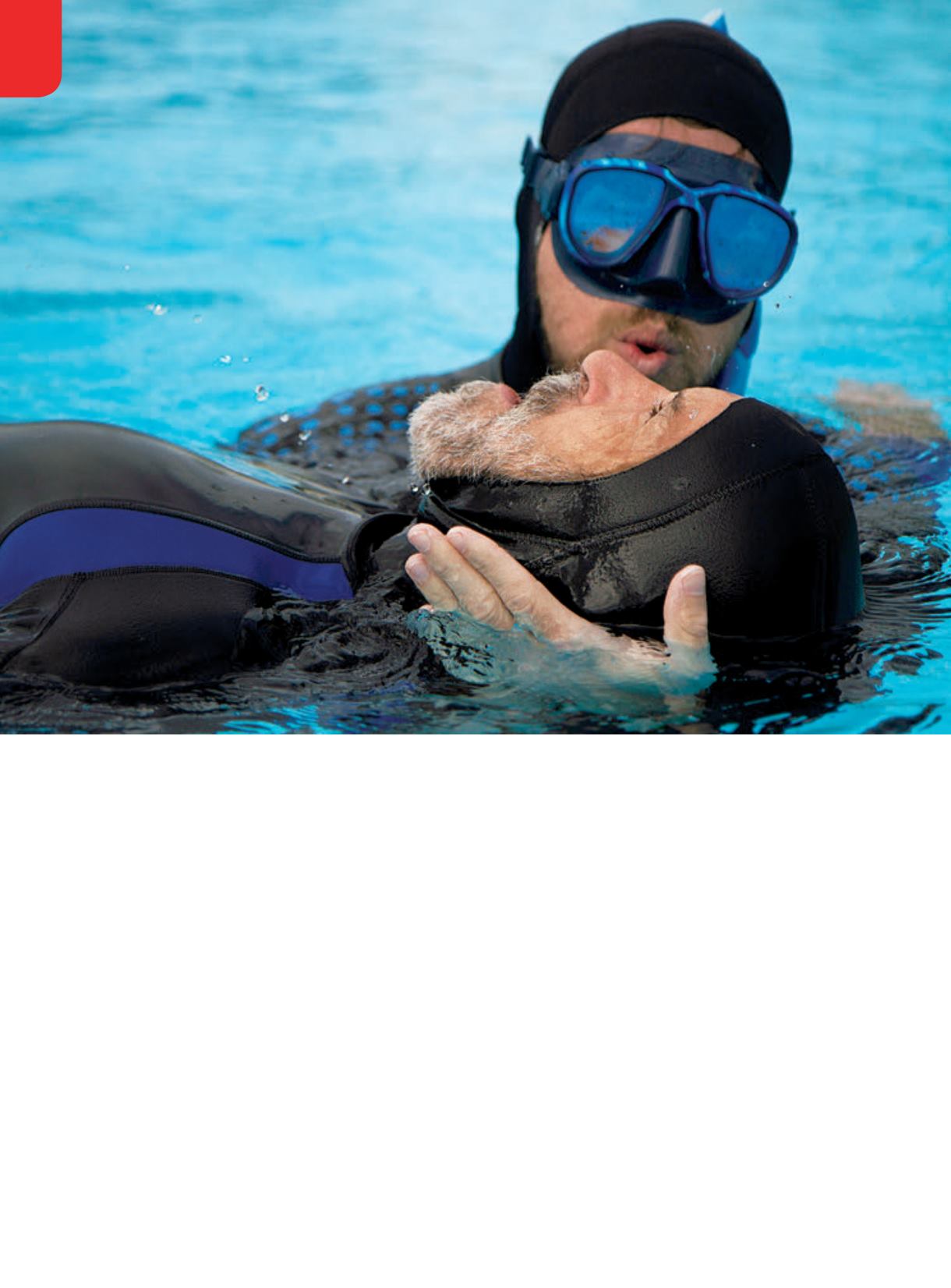

W
ith no indication that
anything would go wrong,
my freediving partner
descended out of sight.
His float line was all that
remained to let me know
he had been there. The minutes that followed were
a reminder that no one is exempt from the risks
associated with freediving.
Having grown up in the Florida Keys, I’m no
stranger to the ocean. Being in the water comes as
naturally to me as breathing. I was a competitive
swimmer, and my dad and I have been freediving
together my whole life. Two years ago I had the
opportunity to attend a Performance Freediving
International freediver course taught by Ashley and
Ren Chapman of Evolve Freediving. My father even
wrote an article about our experience for
Alert Diver
(see Member to Member, Spring 2015).
It would be a complete understatement to say
that this training changed the way I dive and think
about diving. My dad and I recognized how risky our
freediving protocols had been (we had a buddy system
that amounted to “same ocean, same time”). We hadn’t
truly understood the implications of the hazards
involved, especially shallow-water blackout. After taking
the class, safety was the priority every time we dived.
Following that first freediver course, I completed an
intermediate course with Evolve Freediving and have
trained with Ted Harty of Immersion Freediving on
several occasions. The material covered and quality of
instruction in both programs is first rate.
Although training emphasizes the theoretical
aspects of safe freediving, sometimes it takes real-
RESEARCH, EDUCATION & MEDICINE
SKILLS IN ACTION
52
|
WINTER 2017
Cody Wagner practices protecting the
airway during a shallow-water-blackout
drill in the pool with his father.
REN CHAPMAN
A Rude Awakening
By Cody Wagner


















